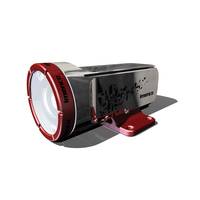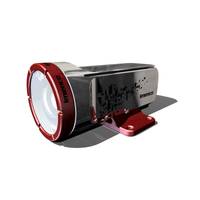
ABB Wins Order for World's Biggest Offshore Wind Farm
managing this sophisticated technology by overseeing thousands of operations in real time to ensure power reliability and efficiency.As part of the project scope, the ABB Ability enabled MicroSCADA system will be used for monitoring of the electricity network and gather data from Relion Intelligent Electronic Devices (IEDs) and Remote Terminal Units (RTUs) to ensure safe and reliable grid integration system operations. Advanced mission critical technology will also be used for communication between the offshore platforms and the onshore substation.Upon completion, the Hornsea Two project in the North Sea

Uncontended Voice and Data Through TDMA Networks
are leveraging satellite technology for the “Internet of Things” The Internet of Things (IoT) has been a hot topic across many industries in recent years. Whether it’s a fitness tracker, smart refrigerator, thermostat or apps within a car, most people are now connected to electronic devices in ways that they probably wouldn’t have imagined 15 years ago. Experts are predicting that there will be more than 24 billion IoT devices installed and $6 trillion invested in IoT solutions by 2020. At this rate of growth, the IoT ecosystem extends beyond consumer electronics to other
KEP Marine Launches Intelligent Vessel
products on the market such as proprietary hardware, predetermined configuration choices and node limitations,” said Scott Russell, senior applications engineer, KEP Marine. “Our vessel management systems allow complete monitoring and control of any number of sensors, and electrical and electronic devices on board.” The standard IVMS package provides a wealth of information and is not restricted like other solutions. It is designed specifically for vessels under 50 feet and includes a display, control panel, terminal block kit and choice of 16 monitoring selections. Practical yet full

Imenco & High Resolution Subsea Digital Imaging
Digital transmission is something most of us use - knowingly or otherwise - everyday, whether it be smart phones, tablets or via other electronic devices. The subsea industry is the exception with its reliance on analogue (SD or Standard Definition) cameras in the belief that analogue systems have sufficiently low latency. Latency is the time it takes for the signal to travel from the subsea camera to the operators screen, via the ROV umbilical (wire). For the signal to make this journey, it needs to be converted to an analogue signal in the camera before travelling up the umbilical. Delays can be

High Resolution Subsea Digital Imaging
Digital transmission is something most people use - knowingly or otherwise - everyday, whether it be smart phones, tablets or via other electronic devices. The subsea industry is the exception with its reliance on analogue (SD or Standard Definition) cameras in the belief that analogue systems have sufficiently low latency. Latency is the time it takes for the signal to travel from the subsea camera to the operators screen, via the ROV umbilical (wire). For the signal to make this journey, it needs to be converted to an analogue signal in the camera before travelling up the umbilical. Delays can
Seismic: The Motion Picture
images of the rock layers. But these seismic images may not be sharp enough to pick up important details. As a result, multi-million dollar exploration wells sometimes end up as dry holes. The accuracy of seismic imaging could soon improve thanks to a motion sensor, similar to those found in electronic devices like the handheld controllers in a Wii game console. The sensor, developed by computer giant HP and Shell, is 1,000 times more sensitive than those in the Wii. Dirk Smit, Shell Chief Scientist for Geophysics, was at a nanotechnology conference in late 2008 when he learned of the HP sensor


 February 2024
February 2024





